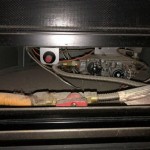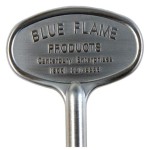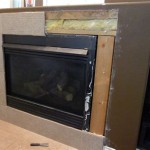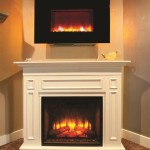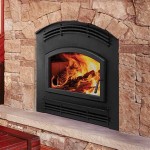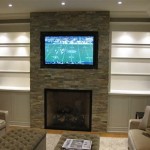Art Deco Peacock Fireplace Screen: A Synthesis of Elegance and Function
The Art Deco Peacock Fireplace Screen represents a distinctive intersection of artistic expression and practical utility. Emerging during the Art Deco period, a design movement spanning from the 1920s to the 1930s, these screens are characterized by their visual opulence, geometric patterns, and the recurring motif of the peacock, a symbol deeply entrenched in mythology and aesthetic appeal.
Art Deco, as a design philosophy, embraced modernity while simultaneously drawing inspiration from ancient cultures and natural forms. This resulted in an aesthetic that was both forward-looking and inherently classic, a combination perfectly embodied within the peacock fireplace screen. These screens served a functional purpose, protecting occupants from sparks and excessive heat emanating from the fireplace, while simultaneously acting as a significant decorative element within the home.
The peacock, an animal admired for its iridescent plumage and elaborate display rituals, became a popular motif during the Art Deco era. Its association with beauty, luxury, and immortality resonated with the design principles of the time. The incorporation of the peacock motif into fireplace screens transformed a utilitarian object into a statement piece, reflecting the aspirational values and aesthetic sensibilities of the period.
Key Artistic and Design Elements
The design of an Art Deco peacock fireplace screen typically incorporates several defining characteristics. The use of geometric forms, such as zigzags, chevrons, and stylized curves, is a hallmark of the Art Deco style. These shapes are often used to create a sense of dynamism and movement, echoing the energy and optimism of the era. The peacock itself is frequently depicted in a stylized manner, with its feathers rendered in symmetrical patterns and vibrant colors.
Materials commonly used in the construction of these screens include wrought iron, brass, copper, and occasionally, inlaid enamel or glass. Wrought iron provided a sturdy and durable framework, while brass and copper offered opportunities for intricate detailing and decorative embellishments. The use of contrasting metals and finishes, such as polished brass against blackened iron, created visual interest and enhanced the overall aesthetic appeal.
Color plays a crucial role in the overall impact of the Art Deco peacock fireplace screen. While the specific palette varied depending on the artist and the overall design scheme, common colors included gold, silver, black, emerald green, sapphire blue, and ruby red, mimicking the vibrant hues of the peacock's plumage. These colors were often applied in bold, contrasting combinations, further emphasizing the screen's decorative value.
The level of detail present in these screens can range from relatively simple geometric patterns to highly elaborate depictions of peacocks and other related motifs. Some screens feature intricate metalwork, with feathers rendered in a realistic style, while others employ more abstract designs, focusing on the overall shape and form of the peacock rather than its specific details. The choice of design often depended on the intended setting for the screen, with more elaborate examples being reserved for grander, more formal spaces.
The interplay between positive and negative space is another important aspect of the design. Openwork patterns, created by cutting away portions of the metal, allowed light and air to circulate while also adding depth and visual complexity to the screen. These openings were often strategically placed to highlight the peacock motif and create a sense of movement and dynamism. The contrast between solid metal and open space further enhanced the screen's overall aesthetic appeal, making it a captivating focal point within the room.
Functional Considerations and Construction Techniques
Beyond their aesthetic qualities, Art Deco peacock fireplace screens were designed to serve a practical purpose. The primary function of the screen was to protect the occupants of the room from sparks and embers that could escape from the fireplace. The screen also helped to regulate the heat radiating from the fire, preventing it from becoming too intense and uncomfortable. The mesh or solid metal panels prevented errant flames from setting flammable materials like rugs or furniture alight.
The construction of these screens typically involved a combination of traditional metalworking techniques and innovative design principles. Wrought iron was often used to create the frame and support structure of the screen, providing a sturdy and durable foundation. The peacock motif and other decorative elements were then added using a variety of techniques, including forging, casting, and repoussé.
Forging involved shaping the metal using heat and hammering, allowing the artisan to create intricate details and organic forms. Casting was used to create more complex shapes, such as the peacock's body and head, which were then attached to the frame. Repoussé is a technique in which the metal is hammered from the back to create a raised design on the front, adding depth and dimension to the screen.
The individual components of the screen were often joined together using rivets, welds, or screws, creating a strong and durable structure. The screen was then finished with a protective coating, such as paint, lacquer, or varnish, which helped to prevent rust and corrosion. The finishing process also enhanced the screen's aesthetic appeal, adding luster and depth to the metal surface.
The size and shape of the screen were determined by the dimensions of the fireplace opening and the overall design scheme of the room. Screens were typically designed to be slightly larger than the fireplace opening, providing adequate protection from sparks and embers. The height of the screen was also an important consideration, ensuring that it effectively shielded the occupants of the room from the heat of the fire.
The Peacock Motif: Symbolism and Cultural Significance
The peacock, as a recurring motif in Art Deco design, carried a rich tapestry of symbolism and cultural significance. Throughout history, the peacock has been associated with royalty, beauty, immortality, and good fortune. Its extravagant plumage and elaborate display rituals have made it a symbol of pride, vanity, and self-confidence.
In ancient Greece and Rome, the peacock was associated with the goddess Hera (Juno in Roman mythology), the queen of the gods and protector of marriage and childbirth. The peacock's tail feathers, with their distinctive "eyes," were believed to represent the all-seeing gaze of the goddess. Owning a peacock was a status symbol, denoting wealth and power.
In Hinduism, the peacock is associated with the god Krishna and is considered a sacred animal. Its feathers are believed to bring good luck and ward off evil spirits. The peacock is also a symbol of beauty, grace, and knowledge. The association with divinity made its usage in decorative arts particularly appealing, aligning with the desire for elevated aesthetics.
In Christianity, the peacock is sometimes used as a symbol of resurrection and immortality, due to the belief that its flesh does not decay after death. This symbolism added another layer of meaning to the peacock motif, making it a popular choice for religious art and decoration.
During the Art Deco period, the peacock's association with luxury, beauty, and exoticism made it a perfect fit for the design aesthetic of the time. The peacock motif was used extensively in jewelry, clothing, furniture, and decorative arts, becoming a defining symbol of the Art Deco era. Its presence on fireplace screens elevated the everyday object to a symbol of sophistication and refinement, aligning with the overall aesthetic ambitions of the age.
The Art Deco peacock fireplace screen, therefore, stands as a testament to the era's distinctive blend of artistry, functionality, and cultural symbolism. It represents a tangible connection to a period characterized by optimism, innovation, and a relentless pursuit of beauty.

Vintage Cameo Victorian Brass Peacock Fireplace Fan Folding Screen Chairish

Antique Brass Peacock Fireplace Screen Ruby Lane

Vintage Brass Peacock Fireplace Screen Cover Cameo Folding Fan

Vintage Brass Peacock Fireplace Screen Art Deco Dancing Lady Large 33 034 H

Vintage Brass Peacock Gold Folding Fireplace Screen Chairish

Vintage Art Deco Brass Peacock Fireplace Screen Colorful Decor

Vintage Brass Fireplace Screen Fan Gargoyle Peacock Griffin Inventifdesigns

Vintage Brass French Peacock Fireplace Folding Fan Screen Art Deco Victorian

Peacock Art Deco Gold Fire Screen An Inspired With A Touch Of Titanic Styling

Antique Peacock Brass Fire Screen 808496 Ingantiques Co

